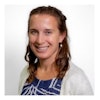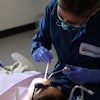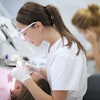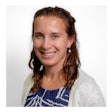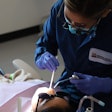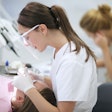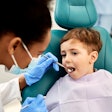
Despite opposition from other professional groups, the Connecticut State Dental Association (CSDA) wants to bring dental health aide therapists into the state for a pilot program.
The only dental therapists currently practicing in the U.S. are limited to treating indigenous people in Alaska, but Minnesota has begun training a new class of oral health practitioners in that state as well.
“We're trying to take control of the issue before someone else takes control of it for us.”
— Bruce Tandy, D.M.D.
The CSDA House of Delegates voted in November to set up a demonstration project using dental therapists.
The organization had opposed a proposal in the state Legislature to license advanced dental hygienist practitioners, who would have placed simple restorations and extracted teeth. "We were challenged by the state Legislature: 'If you don't believe in this model, what model do you believe in?'" said CSDA president Bruce Tandy, D.M.D. "We're trying to take control of the issue before someone else takes control of it for us."
The CSDA is trying to figure out whether the dental therapists could improve access to care, particularly for school children. "We believe we need data to determine whether they have efficiency or not," Dr. Tandy said. "We want to know if they positively affect access to care."
The state should start with a pilot program because Connecticut is different from other states and has to figure out what model will work best there, he said.
The CSDA decision drew criticism from both the Connecticut Dental Hygienists' Association and the Academy of General Dentists (AGD).
Why not hygienists?
"We're unclear as to why a new dental team member is being introduced," said Meg Zayan, R.D.H., M.P.H, E.D.D., dean of the University of Bridgeport dental hygiene school. "It's been shown that hygienists and dental assistants do well with providing restorative care."
Dr. Tandy argued that training dental hygienists to expand their roles would take them away from the jobs they are already doing.
And he said the proposed advanced dental hygienist practitioners would get more training than the dental health aide therapists, so they would be more expensive. The advanced hygienists would get 18 months of training in addition to the two to four years that hygienists currently get in the state. Dental therapists practicing in Alaska complete only two years of training after high school, and the Minnesota oral health practitioners need at least a bachelor's degree.
Dr. Tandy also worried that advanced hygienists would migrate into private practice rather than devoting themselves to underserved populations.
Zayan disagreed. Training hygienists to do restorations won't deplete the supply of hygienists doing hygiene because the state has plenty of hygienists, she said. "We're graduating around 130 a year, and jobs are not as easy to find as they once were. Nationwide, there is definitely a surplus." By contrast, there is a projected shortage of dentists, so hygienists are needed to pick up the slack, she said.
The advanced hygienists won't migrate into private practice because the proposed law would limit them to working in public health settings, such as nursing homes, licensed public health facilities, community health centers, and veterans' facilities, she said.
As for the argument that dental therapists would be less expensive because they have less training, "if that's the focus, that would be concerning for the patients."
AGD campaign
The AGD, which has opposed the advanced hygienist proposal, also took issue with the training of the therapists.
"We need oral health practitioners in the underserved areas who will truly put the patient first," said AGD President David F. Halpern, D.M.D., in an e-mail to DrBicuspid.com. "Our concern is and always will be to protect the health and safety of the public and to truly improve their oral health with a focus on prevention. Unfortunately, using practitioners with significantly lesser education than a dentist to treat the most vulnerable patients has the unpredictable potential of endangering their health and working against the prevention model."
As an alternative, the AGD advocates increasing the education of dental auxiliaries who remain under the supervision of dentists, Dr. Halpern said. The AGD sent messages to its members in Connecticut, asking them to lobby against the CSDA's decision.
Despite this opposition, the CSDA is going ahead with the therapist program, said Dr. Tandy. But it said it will take at least two years to get it up and running.
Rather than asking the Legislature to pass new licensing laws, he envisions setting up the demonstration project under the auspices of a university. The therapists might practice under the same regulations that allow students to practice, he said.
Dr. Tandy said he doesn't envision a training program in Connecticut for the demonstration project, so the therapists would have to come from Alaska or overseas.
Funding might come from nonprofit organizations. The Pew Center on the States and the W.K. Kellogg Foundation have both indicated interest in dental therapist programs. And a healthcare reform bill passed by the U.S. Senate sets aside money for dental midlevel provider demonstration projects.
No one should feel threatened, said Dr. Tandy. "Some people feel like we're opening Pandora's Box. We're just trying to find out whether the idea is valid."
